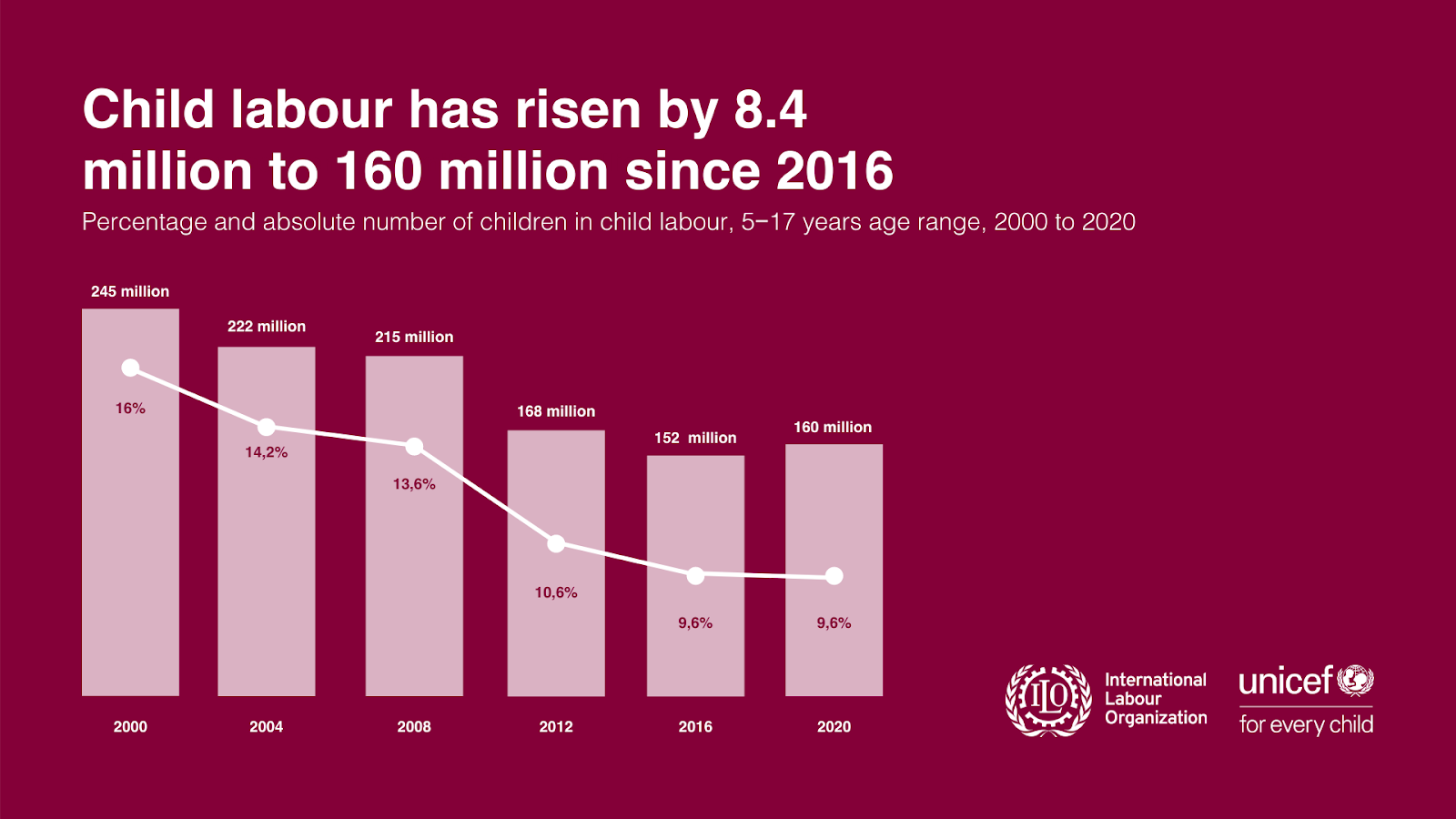PART TWO Child Labour: Definitions, Data and Misconceptions
The Data Landscape
Trends
(All data in this section is taken from the International Labour Organisation’s Child Labour Global Estimates 2020, Trends and the Road Forward).
Child labour is currently estimated by the International Labour Organisation (ILO) to be at 160 million children aged 5-17 years globally, which equates to 1 in 10 children in the world. This increased by 8.4 million children between 2016 and 2020, and based on analysis at HACE, we predict the number will have increased again when new estimates are published in 2024.
160 million children are in child labour. Data source: International Labour Organisation’s Child Labour Global Estimates 2020, Trends and the Road Forward. Image source: https://endchildlabour2021.org/5-takeaways-from-the-2021-global-estimates-on-child-labour/
49.4% of child labourers are in hazardous work (have a look at our previous blog post to find out more on the definition of hazardous work). This number equates to 79 million children and increased by 6.5 million from 2016 to 2020.
70% of child labour is in Agriculture, which often involves the production of raw commodities that feed in to global supply chains.
A common misconception around child labour is that it only occurs in low-income economies, yet 1.6 million child labourers live in high-income economies. Additionally, 93.4 million child labourers, over half of all child labourers, live in either a lower-middle income or upper-middle income country.
Another misconception from many is that child labourers don’t attend school, and that is the reason that they work. Actually, 65% of child labourers aged 5-17 years old also attend school.
63 million girls and 97 million boys are in child labour. Child labour is more prevalent in boys than girls across all age groups, but when household chores are considered, the gender gap narrows from 2.8% to 1.6%.
The above data is all based on children aged 5-17 years old, despite recorded instances of child labour in children under 5 years old, which is one reason that means the data is likely to be an underestimation. This is one of many aspects that cause issues with child labour data, more of which are discussed below.
Data Issues
With 160 million children in child labour globally, and in a world where data is an ever-growing resource, you might assume there is a lot of open, clean, recent and standardised data on child labour. Unfortunately, this isn’t often the case.
Data on child labour is collected by many governmental and international sources, such as national statistical offices, the ILO and UNICEF-MICS. However, variables are not measured or collected consistently over time, and they are not standardised between different sources. Some instances of these issues are explored here.
Lack of completeness e.g. only children aged 5-17 are included in global estimates despite extensive evidence of children aged 0-5 working
Timeliness of the data e.g. data is often published at least 1-2 years after it is collected
Lack of standardisation e.g. definitions of indicators differ significantly
Bias and inequalities e.g. gender bias, proxy collection, localisation of data through NSOs/ NGOs all affect the objectivity of the data collected
Data is often estimated or modelled using unverified proxies
Companies don’t collect sufficient data on bottom tiers of their supply chain, which is where child labour is most likely to be within a supply chain
For more information on and examples of these issues, please see HACE’s contribution to the United Nations University’s Code 8.7 Symposium: Using Tech-Driven Data to Address Child Labour.
Code 8.7 Symposium, to which HACE contributed on the topic of child labour data quality and standardisation. Image source: https://twitter.com/Delta87org
PART THREE: Child Labour and its Interaction with Modern Slavery expected 4th January.


